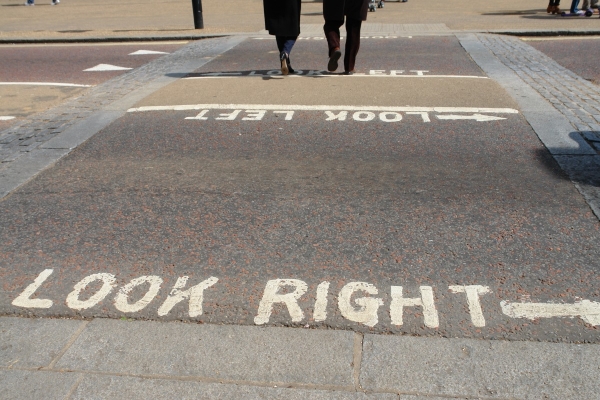WTS Boston's DEI in Motion: Promoting Pedestrian Safety for All

Pedestrian safety remains a critical issue in our communities, and by prioritizing it, we can make our streets safer and more inclusive for everyone. The rising number of pedestrian fatalities highlights the need for concerted efforts to improve infrastructure and how individuals interact with that infrastructure safely. According to the National Highway Traffic Safety Administration (NHTSA), there were 6,516 pedestrian fatalities in 2020. Vulnerable populations, including children, the elderly, and those with disabilities, are often disproportionately affected by pedestrian injuries and fatalities. [1]
The National Safety Council (NSC) emphasizes the need for accessible and inclusive design to ensure safety and mobility for everyone. Streets should feature wide, well-maintained sidewalks, sufficient lighting, and audible crosswalk signals to assist individuals who are visually impaired. [2] The integration of technology in pedestrian safety initiatives can significantly reduce risks per the Centers for Disease Control and Prevention (CDC). Tools like pedestrian detection systems, city-wide surveillance cameras, and data analytics help to monitor and mitigate potential hazards in real time. [3]
Education efforts are a critical piece of pedestrian safety, by working towards infrastructure being used as designed. Informing both drivers and pedestrians about safe practices can limit human error and prevent accidents. The recent Community Resource Guide by the National Highway Traffic Safety Administration (NHTSA) outlines comprehensive strategies to promote pedestrian safety through public awareness campaigns particularly tailored to reach diverse communities. The Community Resource Guide identifies nighttime crossings, non-intersection crossings, impairment from alcohol or drug use, hit-and-run situations, and speeding of vehicles as the highest contributing factors toward pedestrian injuries and fatalities. [4]
As we work together to improve pedestrian safety, it is crucial to maintain a focus on diversity, equity, and inclusion. Often, user experiences differ from conditions considered during design, and thus design must adapt to meet these designs when education efforts fall short. Community members must have a voice in the planning processes that shape their environments. Listening to the needs of underrepresented groups, particularly those with different abilities, ensures that safety measures are effective and equitable.
--
[1] NHTSA. Pedestrian Safety. https://www.nhtsa.gov/road-safety/pedestrian-safety.
[2] NSC. Take Steps to Avoid Injury While Walking. https://www.nsc.org/community-safety/safety-topics/pedestrian-safety.
[3] CDC. Pedestrian, Bicycle, and Motorcycle Safety. https://www.cdc.gov/pedestrian-bike-safety/about/pedestrian-safety.html?CDC_AAref_Val=https://www.cdc.gov/transportationsafety/pedestrian_safety/index.html.
[4] NHTSA. Community Resource Guide. https://www.trafficsafetymarketing.gov/sites/tsm.gov/files/2024-08/pedestrian-community-resource-guide-en-2024-16307-tag.pdf.